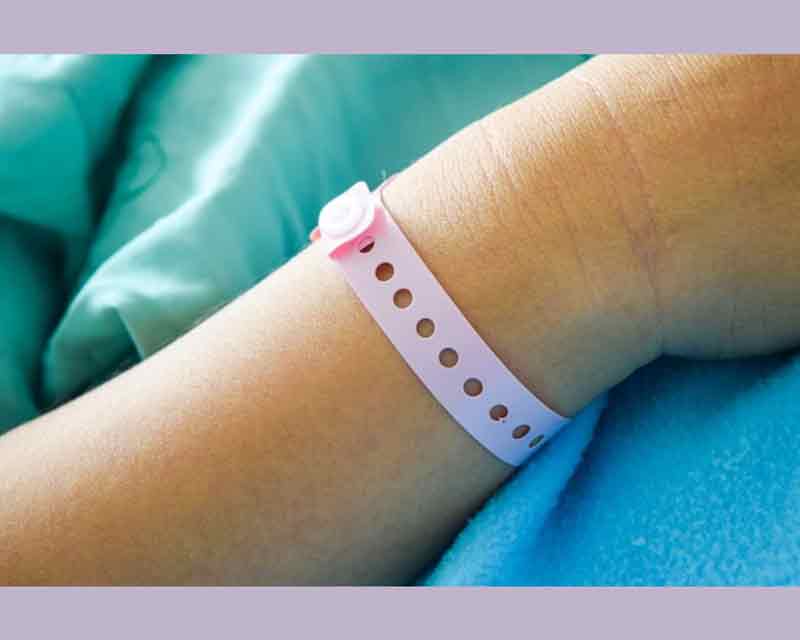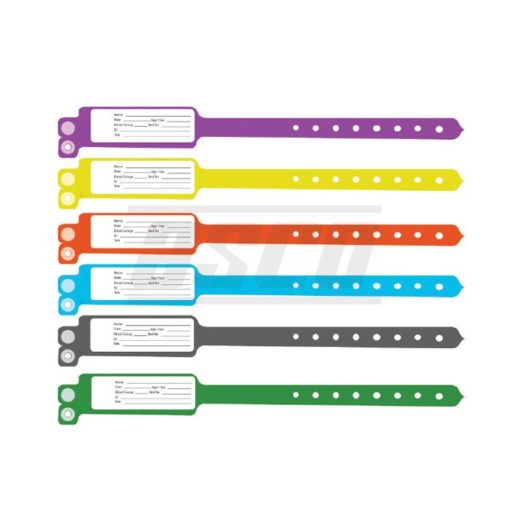Exploring the Advantages of a Patient Identification Band in Preventing Medical Errors
Exploring the Advantages of a Patient Identification Band in Preventing Medical Errors
Blog Article
Discovering the Different Kinds Of Patient Identification Band Used in Clinical Facilities
In the detailed world of healthcare, the crucial duty of Patient Identification bands commonly goes unnoticed. These bands, differing from basic paper wristbands to sophisticated RFID bands, form the foundation of Patient safety and security procedures, ensuring accuracy in Patient Identification. Yet, the large variety of these bands, each with its special benefits and restrictions, is frequently forgotten. As we navigate via this topic, one might gain understanding into the subtle intricacies and vital relevance of such bands in medical centers.
Comprehending the Value of Patient Identification Bands
While they may look like plain accessories, Patient Identification bands play an essential role in clinical facilities. These bands serve as an essential device for confirming Patient identity, protecting against clinical errors associated to misidentification. The bands generally show important information such as the Patient's name, age, blood group, and any type of recognized allergic reactions. They enable health care experts to swiftly access this important details, therefore promoting precise and punctual medical treatment. Patient Identification bands likewise aid in enhancing management jobs, making certain exact record-keeping and payment. Regardless of their simpleness, these bands personify the concept of Patient security, a foundation of high quality health and wellness care. Without them, the danger of medical errors, and consequently, Patient injury, may substantially boost.
Typical Paper Wristbands: Their Use and Limitations
Conventional paper wristbands have been a staple in Patient Identification throughout different medical centers. While their usage is widespread, they nurture specific limitations that might impact their performance in Patient management. This area will concentrate on the range of their application and the inherent disadvantages connected with their usage.
Paper Wristbands: Usage Extent
In the realm of Patient Identification, paper wristbands have actually long held a crucial role. These bands are usually made use of in outpatient setups, where the Patient's keep is temporary. Despite developments in innovation, the simple paper wristband stays a cost-effective and dependable service for Patient Identification in various healthcare scenarios.
Limitations of Paper Wristbands
Despite their widespread use, paper wristbands are not without their downsides. Their physical durability is one of the substantial constraints. Direct exposure to water, sweat, or harsh handling can make them unreadable or perhaps trigger them to disintegrate. Additionally, paper wristbands often do not have the technical abilities of more modern alternatives, such as barcoding or RFID chips, restricting their performance to simply displaying written details. The failure to update or modify the information on the wristband is one more drawback. Furthermore, if the details is transcribed, legibility can be compromised, bring about prospective misidentification. Paper wristbands can trigger discomfort or skin inflammation to some clients, specifically when used for extended durations.
Barcoded Wristbands: Innovations in Patient Identification
While Patient Identification has long been a vital element of health care, the development of barcoded wristbands symbolizes a substantial jump ahead. These bands take advantage of the simpleness of barcoding innovation, enabling for Patient information to be quickly scanned and accessed. They boost the rate and precision of Patient Identification, reducing the risk of clinical mistakes associated to misidentification.
Superhigh Frequency Identification (RFID) Bands: an Action In The Direction Of Futuristic Medical Care
The development of Patient Identification bands has actually brought concerning the introduction of Superhigh frequency Identification (RFID) Bands (patient identification band). These innovative tools existing essential advantages for medical care centers, providing a more efficient and highly advanced means of Patient Identification. The implementation of RFID in medical care is a considerable step in the direction of a much more futuristic approach to Patient management and safety and security
Recognizing RFID Bands

RFID Bands: Trick Benefits
Embracing a future where technology and medical care combine, superhigh frequency Identification bands offer numerous vital benefits. Mainly, these bands improve Patient security by offering accurate, instantaneous Identification, thus decreasing clinical mistakes. RFID bands can store a vast quantity of Patient information, consisting of case history and allergic reactions, allowing personalized treatment. They useful source also streamline management tasks, as the automated data access replaces hand-operated procedures, improving performance and minimizing paperwork. In addition, RFID bands provide real-time tracking of individuals, crucial in risky atmospheres such as surgery or extensive treatment. Last but not least, these bands are resistant and sturdy to environmental aspects, ensuring constant functionality. On the whole, RFID bands stand for a considerable improvement in Patient Identification technology, profiting both people and doctor.
Carrying Out RFID in Medical Care
As we enter a highly innovative period, the implementation of RFID bands in health care ends up being progressively crucial. These bands supply a seamless method to track and determine clients, ensuring their safety and improving efficiency in therapy procedures. RFID bands supply countless benefits over typical Identification techniques. They can store a vast amount of information, consisting of the Patient's case history and therapy strategies, which can be quickly accessed by doctor. This data aids physicians make notified decisions regarding the Patient's treatment plan. RFID bands reduce clinical errors by giving precise Patient Identification, which is important in preventing misdiagnosis or incorrect medication management. Therefore, the implementation of RFID bands is a substantial step in the direction of enhancing Patient security and healthcare distribution.

Color-Coded Wristbands: Aiding in Quick and Accurate Medical Diagnosis
In the dynamic atmosphere of a medical facility, color-coded wristbands have actually emerged as vital devices for swift and accurate Identification of a patient's medical problem. These wristbands, put on by individuals, bring details shades that represent different clinical problems or conditions. As an example, red can indicate allergic reaction risks, while yellow may signify a fall danger. This system is developed to offer instant visual hints to doctor, boosting Patient safety and security and care high quality. In emergency situation circumstances, using these wristbands enables for rapid decision-making. Nevertheless, the effectiveness of color-coded wristbands relies on the uniformity of shade analysis across medical care organizations, calling for common criteria for consistent application.
Techniques for Efficient Execution and Monitoring of Patient ID Bands
Achieving optimal use of Patient Identification bands requires a well-structured technique for their application and administration. The very first step entails training all health personnel on the importance of correctly applying and reading these bands. Hospitals should systematize the usage of ID bands throughout all departments, guaranteeing uniformity and reducing discrepancies. Normal audits needs to be performed to verify adherence to policies and to rectify any kind of incongruities. Patient education is also crucial; people have to comprehend the purpose of the bands and the need for their consistent wear. patient identification band. It's necessary to have a backup strategy in location, such as barcode scanning or biometrics, to ensure that Patient Identification is never website here ever jeopardized.
Verdict
Patient Identification bands are vital in medical facilities to make certain safety and accuracy. Standard paper, barcoded, RFID, and color-coded wristbands each hold one-of-a-kind benefits, varying from cost-effectiveness to innovative data storage space and immediate medical notifies. Reliable implementation and monitoring of these bands can significantly minimize clinical errors, increase performance, and improve overall Patient treatment. Hence, understanding and utilizing these Identification devices is paramount for preserving high criteria in medical care.
These bands, varying from easy paper wristbands to sophisticated RFID bands, develop the foundation of Patient security methods, making certain accuracy in Patient Identification.The advancement of Patient Identification bands has actually brought regarding the introduction of Radio Regularity Identification (RFID) Bands. Generally, RFID bands stand for a considerable improvement in Patient Identification technology, benefiting both patients and healthcare service providers.
RFID bands decrease medical mistakes by giving exact Patient Identification, which is important in avoiding misdiagnosis or wrong medication management. Patient education is also essential; patients must recognize the objective of click for info the bands and the requirement for their constant wear.
Report this page